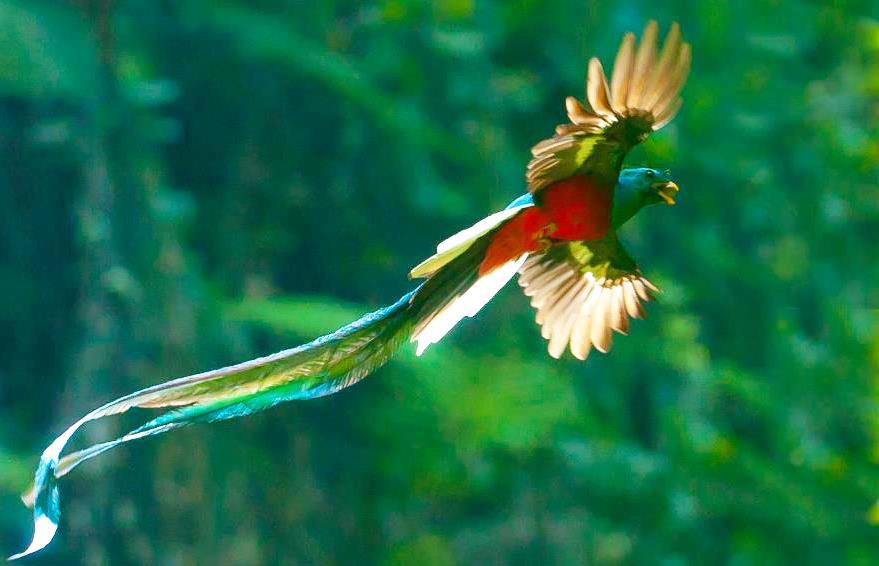With you as my therapist I finally learned to trust another human being. You helped me discover faith in the world and in myself. I didn’t think that was going to be possible. You have been a real gift in my life.

Dreams and Imagery: Finding the Living Core of the Dream
“Myths are public dreams, and dreams are private myths”
Mythologist Joseph Campbell
Welcome Dreamers,
At the core of our dreams are The Images. Beautiful, frightening, sensual, intriguing, they usually represent the heart of our dreaming landscapes. Lately I’ve been learning to pay more attention to the living nature of these images. Last summer at the Dream Conference (http://www.IASD.org) I was introduced to the work of Stephen Aizenstat. I had been familiar with his book “Dream Tending” for some time, but had never read it. After hearing him speak, I got it.
Aizenstat opens up the concept of imagery to what he calls the “Living Image”. Drawing from the work of Carl Jung, James Hillman, Marion Woodman and others, he shares his perception that the dream images are not static. They have a life of their own and exist in this world as well as the one we dreamed them in. The images may start out in our dreamscape, but Aizenstat teaches that they have a life of their own in our awake walk-around world. We already know that they feel real to us when we are dreaming them. Vividly alive in our night journeys, the image can enrich our lives as we allow it to become animate in our daytime world by engaging with it. His basic premise is that “dreams are alive”.
When we engage with the images from our dreams, and give them their due outside of their lives inside our dream, we are engaging in a process called “Amplification,” or making larger. When we expand the image to be as large as it can be we enter the realm of myth and archetype– the great grand stories that have engaged humankind for millennium.
Aisenstat tells us “…a myth is a story that expresses something meaningful about a culture, from origins to values to social interactions”. We dream in our own personal mythologies; our waking task is to then connect our dreams with the mythologies of the larger world. Doing so, we may not only gain insight into ourselves and make broader meaning of our small self-stories, but we can also connect with the larger world dreams, and thus see ourselves and our issues and problems as part of the human condition. Mindfulness practice might call this “right-sizing” the problem.
Aizenstat teaches that there are three steps to the process: Association, Amplification, and Animation. First, allow your mind free Associate to the image, that is, to allow your mind to spontaneously wander about and connect to whatever comes up for you from your own life, feelings, and memories. Then we Amplify, or enlarge these associations to find the bigger stories: these new directions may not have been part of the original dream, but the dream helped to point you in this direction. Finally, we Animate; embody, bring the image to life in some way.
I’ll illustrate a bit of the process with a recent dream image I had. In my dream, a large bright blue-green bird with a very long tail flew into my room. It was beautiful but a little scary, since it was fluttering around the room and it was big. I wondered if I should let it out or try to catch it first. Then I realized that it was a Quetzal.
My first associations were to my father-in-law’s parrot, to the mythical Phoenix, and to my cats liking the “catch and release” program they have devised when a bird accidentally gets into our house (they catch but don’t kill, I capture and release). I didn’t really know what a Quetzal was, just that it had to do with Central America. My dream circle helped me then to amplify: We Googled up “Quetzal” and found references to a divine bird associated with the Mayan or Aztec religions in Mexico. It is officially called a “Resplendent Quetzal”, was associated with Divinity, Love, and Air, and its plumage was valued for headdresses of royalty.
Wow! Who knew? I loved that it was called “resplendent”. My body began to fill up with the feeling of the Quetzal as I spontaneously began to animate it by kind of spreading my arms wide and flapping/waving them at shoulder level, what I call “embodying the dream.” Now I could feel this quetzal energy in my body, especially around my heart and the place on my back where my wings would attach.
Back in the dream, I decided to leave the window open so that the Quetzal could come and go freely.
By using this method of association, (seeing what first caught my attention), then amplifying (enlarging the story, broadening it to include world wide mythic associations, this time with the help of the magic scryer Google,) and then embodying and animating the image, I felt my interaction with it as a real being in ways that I didn’t begin to touch before doing so: I felt exhilarated, a little frightened, and a bit awed by it’s size and beauty. Not bad for a night’s work. It has joined my pantheon of animal guides along with puma and jaguar, and I’ll continue to watch out for it’s messages and meanings in dreams and while awake.
Next time we’ll look at using this process with the scarier images as well, to seek out their healing essence.
Dream well,
Linda Yael
Linda has an amazing ability to present from her vast store of knowledge with wisdom, wit, and warmth. She makes learning fun, and her enthusiasm is contagious.
-- Workshop Participant
